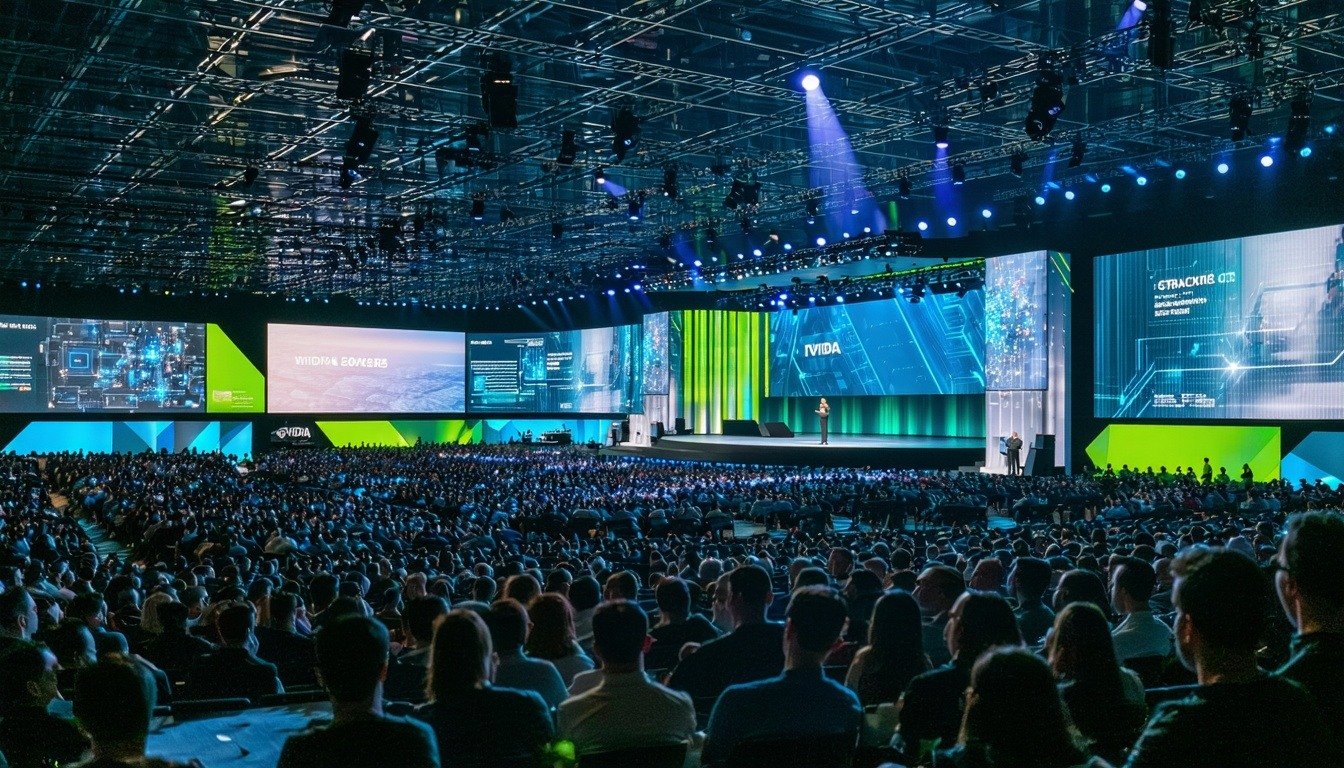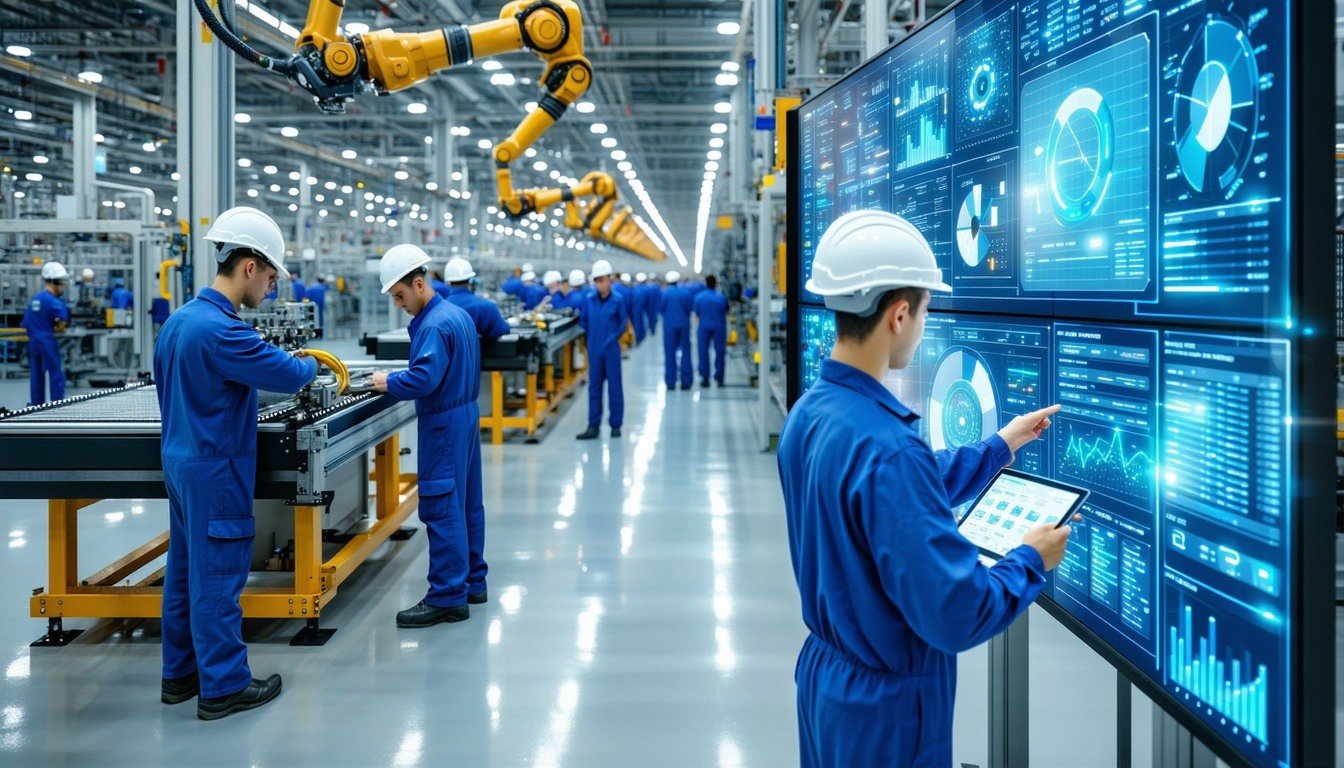The International Manufacturing Technology Show (IMTS) 2024 marked another milestone in innovation, with exhibitors showcasing advancements across robotics, Artificial Intelligence (AI), data integration, cloud computing, and more. The usual big names were there to show the world what they’ve been up to, but they were accompanied by smaller startups hoping to make a big splash. The technological breakthroughs on display in Chicago this year embody the innovative spirit the manufacturing industry requires to address an aging workforce, increased demand, and supply chain complexities.
Here were some of the most exciting trends and standout exhibitors ABI Research’s analysts saw at IMTS 2024.
Robotics Take Center Stage
Collaborative Robots (cobots) were once again a key focus at IMTS. Cobots are designed to work safely alongside humans, performing tasks such as machine tending, which was showcased by multiple vendors.
ABI Research Industry Analyst George Chowdhury covered much of the robotics developments shared at the show. Hurco made its presence known by introducing its ProCobots venture, featuring a robot-agnostic solution for Computer Numerical Control (CNC) machine loading and unloading. Cobots from Universal Robots (UR), FANUC, and ABB powered these demonstrations, with FANUC robots proving especially popular for machine installations throughout the manufacturing space.
Figure 1: Hurco’s ProCobots Solution at IMTS 2024
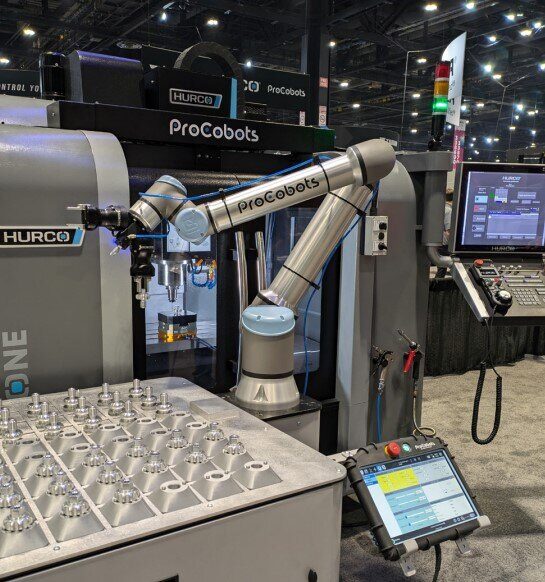
Meanwhile, companies like igus and Vention offered automation solutions aimed at Small and Medium Enterprises (SMEs). Their long-term support and customizable setups highlighted a growing trend in making automation more accessible and affordable.
Another standout technology was scan-to-path robotics, which drastically reduces the time it takes to program robots for industrial tasks like sanding, deburring, and welding. Startup Augmentus captured attention with its system, which uses a Three-Dimensional (3D) scanner to map surfaces, generating a robot path using Machine Learning (ML). This technology can shave hours off programming times, a significant efficiency boost for industries reliant on automation.
AI Fusion with Robotics
Artificial Intelligence (AI), as you can imagine, was a key focus at IMTS. Our analysts saw exhibitors focus on AI-augmented robotics. Chowdhury came across several exhibits demonstrating gimmicks, such as cobot magic tricks, cobot blackjack, and cobot bar tending.
Two companies that stood out to us regarding AI use cases were robotics manufacturers Yaskawa and FANUC. Yaskawa’s MOTOMAN NEXT robot used NVIDIA’s Graphics Processing Unit (GPU) and Isaac Manipulator for adaptive, real-time object picking. It was undoubtedly one of the most advanced showcases at the event.
Meanwhile, FANUC’s use of ML allowed its robots to perform dexterous tasks with vision-based algorithms. The solution utilized vision-based classification algorithms, employing a "bubble" method—essentially a machine vision technique that uses a series of bubbles for precise edge detection. According to an engineer, AI plays a small, but crucial role in adjusting the robot's path, enabling it to adapt to the way objects are positioned in the bin.
Figure 2: Robotic Arm on Display at IMTS 2024
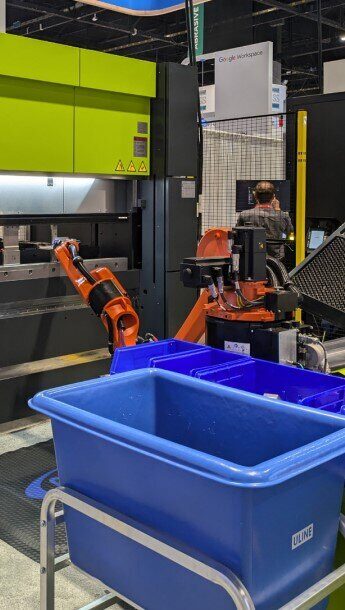
AI's growing influence could also be observed among software vendors, with many predicting a sharp rise in the use of Large Language Models (LLMs) to control both industrial and collaborative robots. It's expected that future events, like IMTS 2026, will showcase significant advancements in this area.
Beyond robotics, our analysts also observed exciting developments in cloud computing, data integration, and industrial WLAN.
Cloud Computing and Data Fabric Solutions
Data silos are a big problem for manufacturers. Without a unified approach to data, you never know if you’re making the best decision available to your organization. To address this ongoing problem, technology vendors are developing enterprise data fabric platforms.
Cloud hyperscalers Microsoft, Amazon Web Services (AWS), and Google showcased solutions aimed at breaking down data silos in manufacturing environments. Microsoft’s adaptive cloud framework highlighted ways to integrate Operational Technology (OT) and Information Technology (IT) seamlessly, while AWS’ Industrial Data Fabric (IDF) focused on scalable pipelines that enable real-time data analytics across factory environments.
Similarly, Google Cloud emphasized the importance of data fabric solutions in transforming manufacturing operations. Google’s Manufacturing Data Engine was highlighted for its ability to unify and standardize data across environments. It enables advanced use cases like predictive maintenance, quality control, and AI-driven insights.
Industrial WLAN Gains Prominence
Principal Analyst Andrew Spivey noted the drastically different attitude toward connectivity solutions at IMTS this year compared to 2 years ago. IMTS 2024 featured a reversal of the competition between Wireless Local Area Networks (WLANs) and 5G seen in prior years. It was once predicted by telecommunication giants that 5G would make industrial WLAN obsolete; however, this has not been the case. 5G was seen as just one of many connectivity options available to manufacturers. With 5G out of the spotlight, it was WLAN’s time to shine.
Companies like Phoenix Contact showcased new 802.11ax devices capable of leveraging the 6 Gigahertz (GHz) spectrum, emphasizing WLAN’s relevance in industrial settings. This new approach fosters a more collaborative future between 5G and WLAN networks, giving manufacturers greater flexibility in choosing the right connectivity solution for their operations.
Figure 3: Phoenix Contact’s Industrial WLAN Solution for Machine Builders
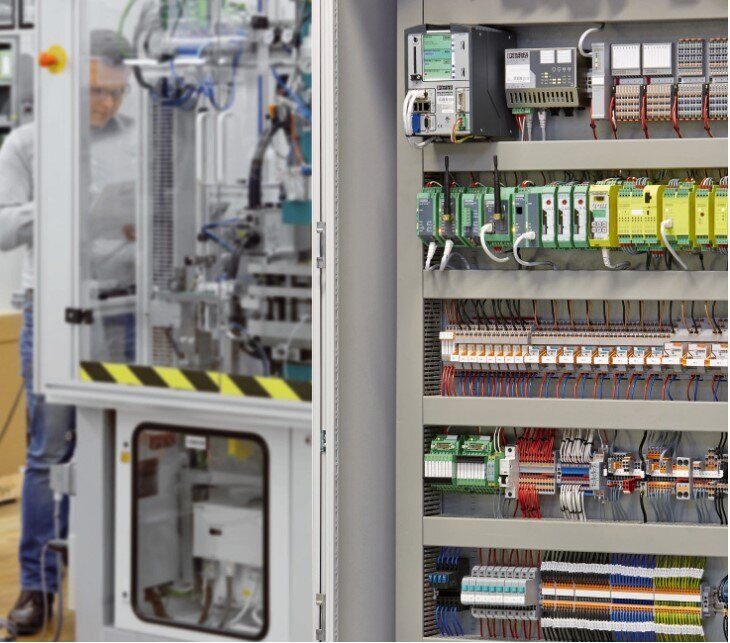
Hear More from Our Analyst Team
IMTS 2024 underscored the exciting future of manufacturing with significant advancements in robotics, AI, cloud computing, data fabric, and wireless connectivity. From cobot innovations to AI-powered decision-making, the event showcased how technology continues to reshape industries. As companies continue to adopt and integrate these cutting-edge solutions, the coming years promise even greater efficiency, scalability, and innovation. We look forward to the next show!
To hear more about what our analyst team observed at IMTS 2024, download the whitepaper The Best Of IMTS 2024.


